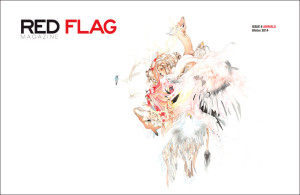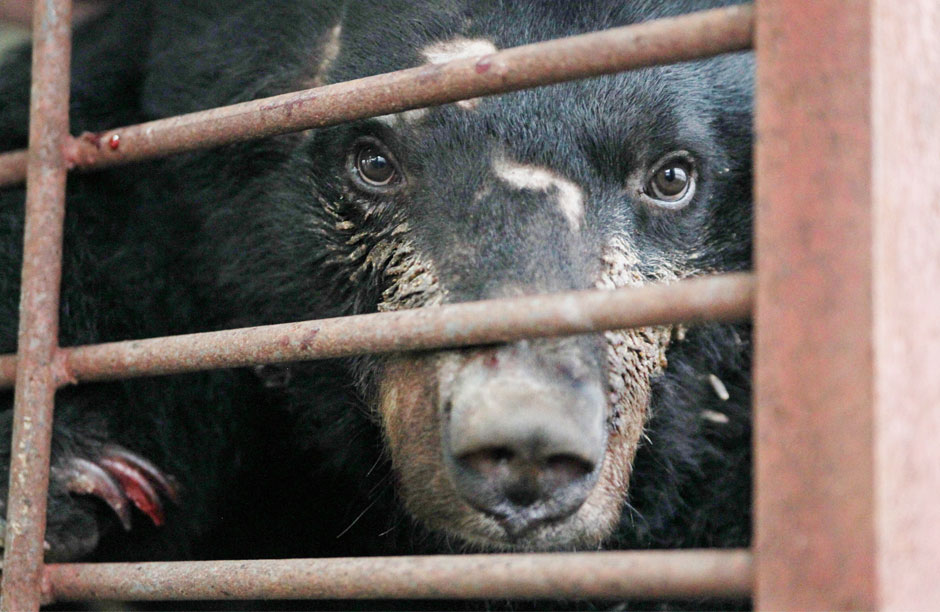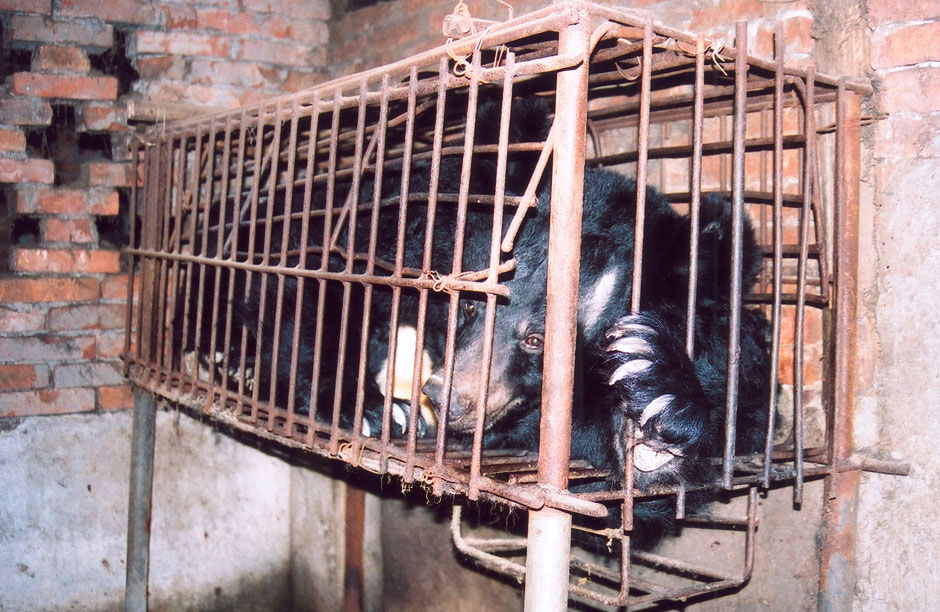Bear Farming
By Ben Davies
“Blind,” an Asiatic black bear, has spent seven years in a cage barely larger than his outstretched body. His stomach carries the scars of an operation to extract bile that went badly wrong. His eyes stare out vacantly at identical rows of cages that extend on either side.
Every three or four months, Blind is drugged with a syringe full of ketamine, which is fired into his side from a blowpipe. The barely conscious bear, his jaws twitching and his eyes still open, is hauled from his cage onto a metal cradle and wheeled into an adjoining “operating room.” Using an ultrasound machine, the owner locates the bear’s valuable gall bladder, the organ that temporarily stores bile secreted by the liver. Once the gall bladder is found, a 10-cm surgical needle is plunged into the animal’s flesh and the green bile is pumped out into a glass beaker.
In all the operation takes little more than fifteen minutes before the bear is manhandled back into his cage. It will take another thirty minutes for him to fully come around. The 250ccs of bile that Blind produces can be sold for around U.S.$1,000 for use in traditional Chinese medicine, where it is widely prescribed as a cure for hepatitis and hangovers as well as chronic diarrhea, hemorrhoids, and eye problems.
Blind is just one of seventy bears locked away in this illegal farm in Ha Tay Province, northern Vietnam. His fellow bears include “Circus,” a fully grown moon bear sold to the owner by a fairground in Hanoi because she performed tricks badly, and “Finance,” a gleaming well-kept 200-kg bear that once belonged to a banker. “I have names for all the bears,” says Mrs. Loc, the Chinese owner who started up the farm with two bears and now operates one of the biggest so-called experimental bear-breeding centers in the country.
She might just as well be referring to a bunch of pedigree dogs in kennels – except that these endangered animals almost all come from the wild. Typically the mothers are shot or trapped by wire snares in the forests of Laos and Vietnam. The whimpering and disoriented cubs are concealed in bags and smuggled to nearby towns where they are sold to traders. Bears may change hands several times before they find a long-term home. With the exception of those butchered to supply restaurants that sell bear paws, they almost always end their days in one of the many farms like this.
Bear bile “farming” was first introduced in North Korea in the early 1980s in a bid to stop bears being taken from the wild and killed for their gall bladders. Today it is a hugely lucrative industry involving at least 4,000 bears in Vietnam and probably two or three times as many in China. Until recently, it was common for 13- to 18- centimeter metal catheters to be surgically implanted into the bear’s gall bladder to ensure a continuous supply of bile. This cruel method, however, caused excruciating pain and often led to chronic infection, with bears dying after less than ten years of captivity. Their normal life span in the wild is thirty years.
The use of ultrasound machines revolutionized the industry by allowing bears to be kept alive longer and by dispelling some of the fiercest criticism that the animals were being treated cruelly. But this supposedly humane and painless form of extraction can still lead to the harmful leakage of bile into the body and to a slow, agonizing death from peritonitis, a severe form of inflammation.
“Whatever technique is used to extract bile from live bears is absolutely horrific,” says Jill Robinson, founder of the Hong Kong-based Animals Asia Foundation, an organization dedicated to putting an end to this practice. Robinson first witnessed the horrors of bear farming in southern China back in the early 1990s. She has since led an international crusade aimed at closing down bear farms throughout Asia. Her efforts paid off when the Chinese government agreed to free 500 bears from some of the most notorious bear farms in the province of Sichuan. The first group of bears has since been taken to a rescue center run by the foundation where they are treated with a love and affection previously undreamed of.
But it’s likely to take a lot more international pressure before the thousands of unregistered bears held in captivity throughout Asia are finally put out of their misery. In early 2002, the Vietnamese government, bowing to the demands of people like Robinson, passed a new wildlife law banning ownership of protected animals and effectively prohibiting all types of bear farming. But eighteen months later, there was little evidence that the industry is in decline. One bear farm even advertises its services in a newspaper published by the national police force. “Bear bile produced from live bear” reads the advertisement run in September 2003.
The farm in question is situated at the end of a narrow lane on the outskirts of Hanoi. It has twenty-five bears kept in the same trademark cages. Every Sunday morning at 8:30 a.m., first-time buyers come here to watch the animals being milked and to check that the bile is authentic. Outsiders are not welcome. “We only keep a small number of bears here in case we have problems with the police,” admits Mr. Luong, the co-owner as he sips on a glass of rice wine mixed with bear bile.
In this delightful old capital of lakes and tree-lined boulevards, there are other reasons for keeping bears. Back in 1996, Mr. Le Thanh, was working as a pediatrician in a local maternity clinic when he fell sick from a debilitating liver disease. He tried western medicine but to no avail. Given only weeks to live by doctors, a friend of his wife suggested that he try bear bile. The cure was so effective that Mr. Le Thanh gave up work and began farming and breeding bears for their bile, becoming one of the first commercial operators to do so. Today, he has six bears, which he keeps in cages on the second floor of his house on Ham Tho Quan Street. Every day he feeds them human placenta mixed with vegetable, bone, honey, and sticky rice –a recipe that he swears keeps them from getting fat. “The bile is better with this diet,” he says.
In the years since Mr. Le Thanh started up his business, thousands of other Vietnamese have followed suit, part of an unstated government policy to use sustainable bear farming to create employment opportunities for rural communities. With so many suppliers, however, the price of bear bile has plunged in recent times, leading to a crisis among small-time owners who are finding it increasingly difficult to support their bears.
Unable to control the trade or to pay for the care of seized bears, the Vietnamese government is now talking of granting an amnesty to owners of bear farms. Such an amnesty they say will ensure that further animals are not taken from the wild. But in Vietnam it is actions that speak louder than words. And so far there is little evidence of the will to change or to take criminal action against the people—mainly state officials, who perpetuate the illegal trade.
Excerpt from Black Market: Inside the Endangered Species Trade in Asia. Copyright Ben Davies, 2005.



